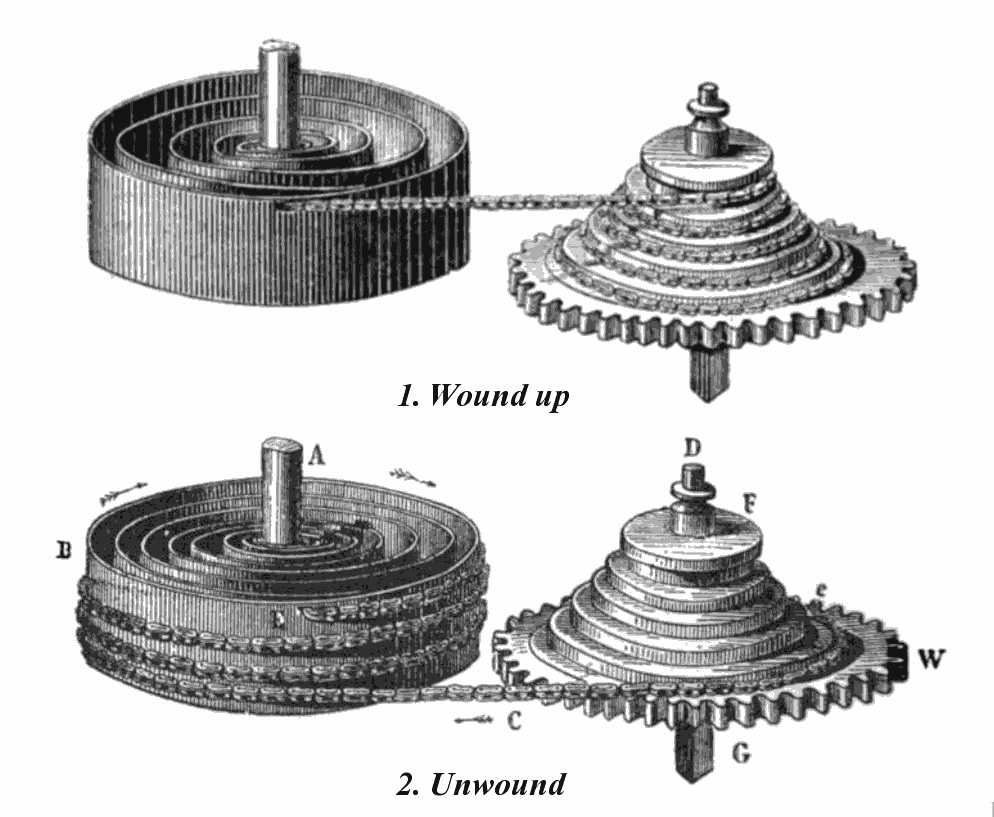
The key to miniaturisation: the Fusee, early 15th century
Commentary
In the Renaissance, there was a tendency toward miniaturisation of different instruments and objects of art. Europeans had already encountered the wonder of the hand-held astrolabe, which comprised the heavens in a compact object. The desire for portability was as strong as it is now.
The first timekeeping objects to become portable were apparently the sundials. In a 15th century miniature from Heinrich Suso's Horologium sapientiae (The Clock of Wisdom, 1330), a monk is depicted meditating on a number of timekeeping instruments. The mechanical pieces occupy centre stage, but also the most space; they are almost or bigger than a human being. By comparison, the sundials and other instruments (astrolabe, quadrant etc) are small enough to be placed on a table.
Successful miniaturisation of timepieces depended on the innovation of the fusee (French for spindle). The fusee was essential in allowing the development of smaller, spring-driven clocks as opposed to the old weight-driven ones.
The fusee was a simple and brilliant solution to the problem plaguing spring-driven clocks: when wound up, the spring had a strong pull (torque), but as it winded down, the pull lessened. The fusee compensated for the unevenness of the torque due to its conic form.
As the image above shows, the mainspring (on left) was connected by a rope or, later, a metallic chain, to the fusee, itself placed between the mainspring and the wheel train, usually the central wheel of the clock. In the 'wound-up' mode, the rope or chain is almost wholly wrapped around the fusee. As the mainspring pulled the rope from the fusee, it exerted a strong force on the fusee. As the rope coiled around the mainspring, the force of the pull lessened, but shape of the fusee compensated for the lowering force. When the rope was completely wound around the mainspring rather than the fusee, the wide end of the fusee provided the momentum needed to maintain the torque constant.
We don't know who and when invented the fusee. The first known clock to use the fusee is the c. 1435 table clock made for Philip the Good, Duke of Burgundy (1396-1467).
Credits: Jo Hedesan (June 2022).
